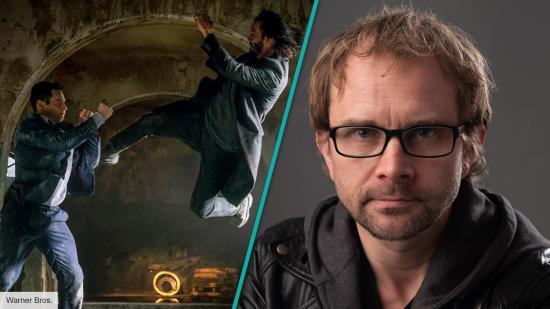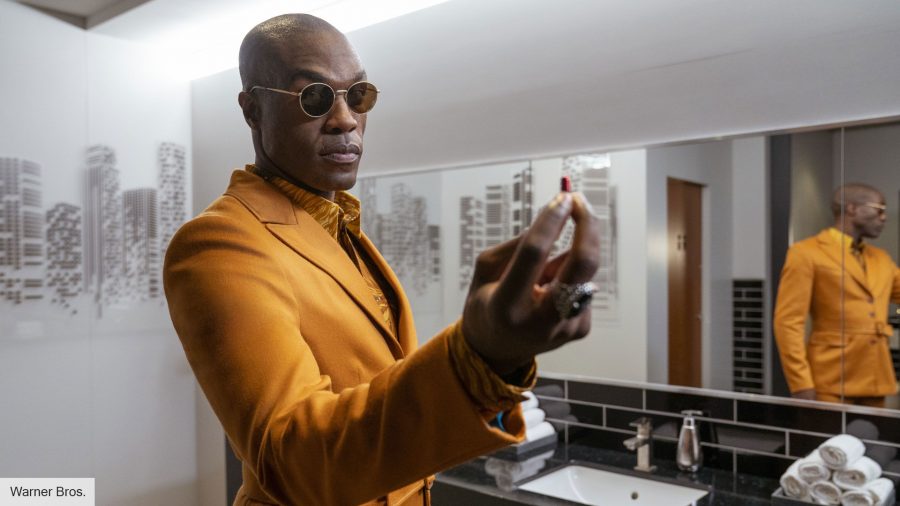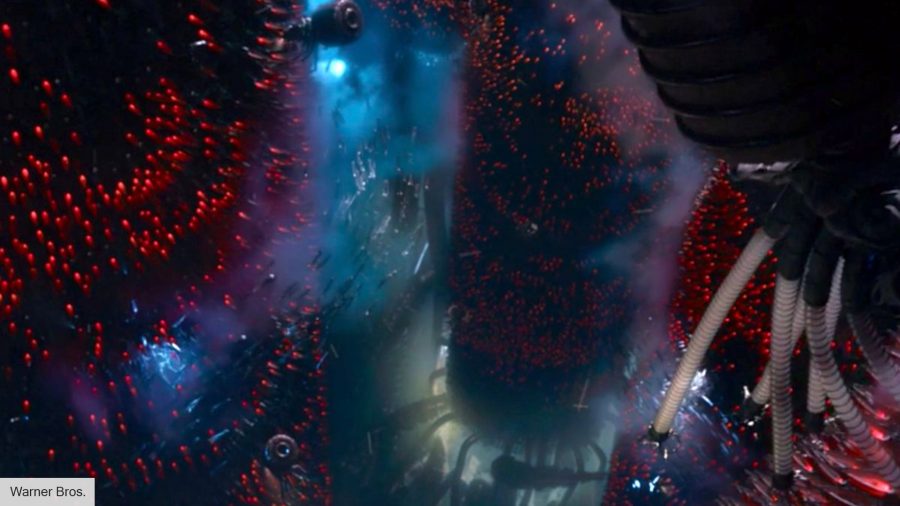“After all these years, to be going back to where it all started,” Johnathan Groff’s Smith says in the first trailer for The Matrix Resurrections. “Back to The Matrix?” In order to extrapolate a new future for the franchise, that’s exactly what Lana Wachowski’s 2021 science fiction movie does, even starting in the same place.
Well, almost – the raid of Agents on Trinity (Carrie–Ann Moss) that opened the 1999 action movie is now viewed from the perspective of Bugs (Jessica Henwick), a hacker investigating an anomaly in the code. She points out that something’s off, and indeed it is, as the fight doesn’t play out quite like it did last time.
The same but different is an underlying theme of the thriller movie. We have Neo (Keanu Reeves, Agent Smith, and Morpheus (Yahya Abdul-Mateen II), but some are inhabiting new bodies, while others are back as we knew them, just slightly older. The fourth Matrix movie blends the past and the present together, in a story of hope, love, and yearning. Its construction was multifaceted and finding a balance between what’s familiar and what’s not was a lingering concern.
“We were, I think, particularly wary of repeating too many of the iconic moments,” Dan Glass, visual effects supervisor on The Matrix Resurrections, tells us. “Sets like the room where they meet, Echo it is now [previously Neo’s apartment], that was identically built from the plans to that first room, with the exception that we built these kind of broken up walls, so that Bugs could look into the room and see the hallway was similar, but not identical.”
It’s all meant to be something short of déjà vu, a sparking of our synapses for recognition, without redoing what came before. The Matrix hangs over Resurrections, as any great work tends to with its sequels and spin-offs. Wachowski, Glass, and the rest of the creative team understood that the first time remains a landmark, and trying to compete with it wasn’t going to work. Besides, the impetus here is something more poignant.
Down the rabbit hole: The best sci-fi series
“We didn’t avoid similar technology breakthroughs purely to avoid it, but it just didn’t feel as relevant to this storyline. We did explore a lot of cutting edge technologies, including volumetric capture, and that is actually used in parts of the movie, but probably not where people expect it,” Glass explains. “For Lana, this was a much more emotional piece, it was much more about realism so that you reconnect with the characters. That’s why we shot a huge amount of the Matrix world with real locations and real stunts, so that it felt that much more real than the earlier movies did.”
The Matrix Resurrections is, at its heart, a romance movie, about two people getting a second chance to be together after a tragic separation. Wachowski dedicated the picture to her mother and father, with the words ‘Love is the genesis of everything’. Glass tells us they simply didn’t want to “overburden” that narrative with filmmaking tech just to be flashy.
Not that this isn’t, some sequences are truly mind-blowing, not least being the mirror transition that occurs after the train Neo, Bugs, and Sequoia are on is besieged by zombified bots within the simulation. The swarm, as it’s called, turns everyone in the vicinity into bloodthirsty creatures with blackened eyes. In the years since 1999, shooting such a thing has become considerably easier, if you’ve got the right people on board.
Whoa: The best thriller movies
“The train carrier itself was built on a green screen stage, and all of the outside is an added environment speeding by. And then the other thing that we did, apart from changing the eyes of the kind of zombie bots, is we added stuff flying around in the train, just to kind of give that sense of speed and chaos,” Glass recalls. “We cleaned out rigs, we had to put a ceiling in because they had a lot of rigs kind of wired up through the ceiling for some of those stunts. It was a true collaboration of departments and teamwork.”

The occasional bit of mind-controlled infestation aside, the irony of The Matrix Resurrections is that most of the virtual plane was done on location, while the real world of Io, the hovercraft Mnemosyne, and the Machine City were achieved through heavy effects. Humans now live side-by-side with sentient robots, drones that have broken away from the hivemind.
Glass was conscious of advances in home entertainment and resolution when approaching these scenes. 4K, UHD, and quality upscaling are common now, making the audience more discerning when it comes to quality CGI. This was the area where the effects team got granular, fleshing out every inch of the mechanical hellscape they could.
Mr Anderson: The best robot movies
“We put a tremendous amount of work into really incredible levels of detail, looking at real-world atmospherics, and the way that lenses behave,” Glass says. “The Machine City itself is based on a lot of things that are familiar, including some of the machine characters, but it’s vastly expanded. The pods, rather than being so organised, they almost have a kind of visible history in them, because we’ve now got these sections that bolt out, that are more dense in areas. It’s almost like it’s grown organically, a little bit.”
The “mess of pipes and tubes” reflects that neither humans nor machines stopped evolving since the ending of The Matrix Revolutions, expanding and contorting ever onwards. Environments shift with the ticking clock, just as we do, and capturing that fragile reality is part of Wachowski’s philosophy as a filmmaker. Glass, who’s worked with her on every film she’s done since The Matrix Reloaded, recounts her evolution towards embracing the more fleeting aspects of existence.
“When we did the first Matrix movies, that stuff was very stage-based, very controlled, it was like it almost needed to have everything defined and manageable, and remove the variables of natural light and weather and so forth,” he says. “But it also made sense in those Matrix movies, because that version of the Matrix was what the computers thought we would buy into, so it kind of fit.”
Humanity: The best Netflix series
In Speed Racer, through Cloud Atlas, Jupiter Ascending, and Sense8, Wachowski incorporated more realness, something that’s made her storytelling clearer, not least for herself. “Every film was a little different in its stylistic approach, that’s part of why it’s been such an enjoyable journey with them,” Glass explains.
“As we got to do things like Cloud Atlas, and then ultimately Sense8, Lana’s embrace of natural phenomena, and finding locations and understanding the way that the sun would rise or set related to that became a really important tool for her emotionally in the way she communicates.”
The Matrix Resurrection is available now on Premium Video on Demand.


